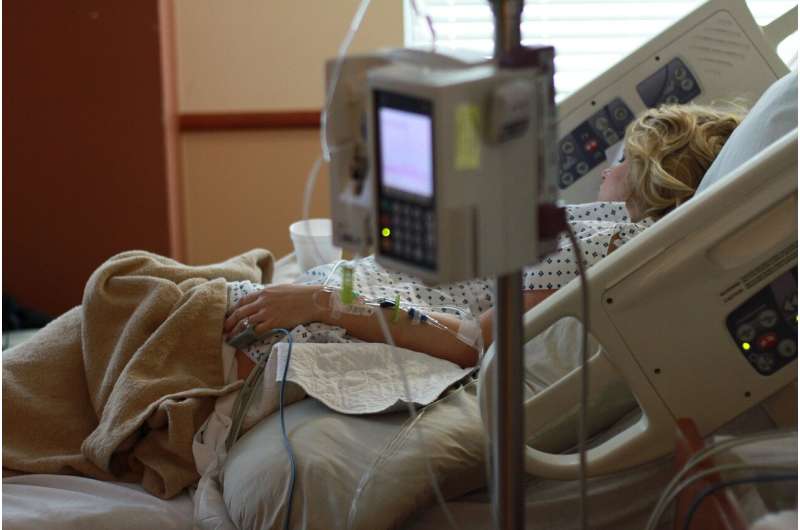Credit: CC0 Public Domain
More than 10 percent of the facilities in the United States that perform transcatheter aortic valve replacement (TAVR) saw worse than expected outcomes in terms of survival and quality of life among patients who underwent the procedure, according to a new analysis led by researchers at the Perelman School of Medicine at the University of Pennsylvania.
As TAVR continues to emerge as an increasingly popular approach to treat aortic stenosis—which occurs when the heart's aortic valve narrows—the Penn team developed a metric to assess the performance of sites nationwide based on patient outcomes. About 80 percent of the 301 sites that were evaluated posted outcomes that were considered to be "as expected." About 8 percent of the sites saw better than expected outcomes. The findings were presented today during a virtual late-breaking clinical trial session at the American College of Cardiology's Annual Scientific Session Together with World Congress of Cardiology (ACC.20/WCC).
"There's clearly an opportunity to improve processes and try to better standardize care to decrease variation between different sites," said the study's lead author Nimesh Desai, MD, Ph.D., a cardiovascular surgeon and associate professor of Surgery at Penn. "The overarching goal of this work is to provide transparency to the public and also to provide feedback to sites so that they can review their practices and develop ways to improve the results in their patients."
When performing a TAVR procedure, operators thread surgical equipment to the aorta via an artery in the chest or groin to replace a malfunctioning valve with an artificial one. In recent years, there has been a significant increase in the number of sites that perform TAVR—a less-invasive, viable alternative to open-heart valve replacement surgery. However, there's been limited data on whether there is a significant variation in patient outcomes—when factoring both survival and quality of life—at sites nationwide.
In this study, researchers identified four complications—in addition to survival—that could significantly affect one's quality of life one year after the TAVR procedure: stroke, life-threatening bleeding, severe acute kidney injury, and moderate or severe paravalvular leak (movement of blood across the artificial valve). The outcomes were ranked and weighted according to their impact on a patient's daily functioning and quality of life.
The team then pulled data from a national registry maintained by the Society of Thoracic Surgeons and American College of Cardiology to assess the outcomes of 54,217 patients from 2015 through 2017.
Applying the metric to the registry data, the researchers identified the average in-hospital complication rate across all sites. From there, they categorized sites whose outcomes were outside the 95 percent confidence intervals of the average as either performing better or worse than expected. Thirty-four sites, representing about 11 percent of all facilities studied, had worse than expected outcomes.
"Because the model incorporates multiple outcomes on a ranked basis, we found it generated reliable assessments even when including sites that perform a low volume of TAVR procedures each year," Desai said. "We believe this model can help establish a platform for pubic reporting that patients and hospitals could use to inform decision-making."
Researchers plan to further analyze data to identify any features or factors that may be associated with worse than expected performance.






















